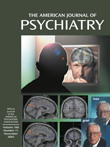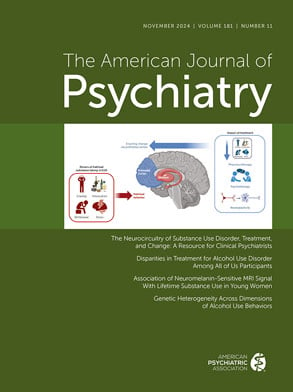Those of us who entered neuroscience and psychiatry around the 1980s witnessed the birth and the rapid growth of an era: the in vivo metabolic and functional exploration of the human brain. Positron emission tomography (PET), magnetic resonance spectroscopy (MRS) and, more recently, functional magnetic resonance imaging (fMRI) have presented scientists from different fields with the unprecedented opportunity to investigate the biochemical bases of mental activities in the intact living human brain as well as in the presence of disease. Measures of regional cerebral glucose metabolism and blood flow obtained by PET (or blood flow-related phenomena by fMRI) represent reliable indices of neuronal/synaptic activity—the basis of whatever action, perception, thought, or feeling our brain may be capable of experiencing. Furthermore, PET studies with specific radioligands or neurotransmitter precursors have begun to disclose how receptors and neurotransmitters interact in distinct physiological and pathological conditions.
The quartet of papers included in this issue of the Journal represents an excellent example of how far we have gone in the journey inside human brain function during the last 25 years. Each of these studies deals with aspects of human cognition and behavior that until recently were often exclusively the domain of philosophy, anthropology, and religion and were considered too subjective and elusive to be the object of scientific investigation. Along with other pioneering articles that have appeared in previous issues of the Journal and in other important scientific magazines, these studies now demonstrate that by combining creativity with sound methodological designs, scientists may venture into the frontier of the neural basis of spirituality and feelings.
The PET study by Calarge and collaborators and the fMRI study by Fossati and colleagues provide new insight into how the brain maintains a representation of the mental state of “the self” and identify which brain regions are involved when individuals attempt to infer the subjective state of others. The ability to “put oneself in somebody else’s shoes” is a key aspect of everyday social life and is the “psychiatrist’s stethoscope” to the patient’s mind. Interactions with peers are greatly compromised in patients affected by psychiatric disorders, such as autism, that interfere with the ability to attribute mental states to self and others, also known as Theory of Mind. In spite of the fact that these two studies employed different functional methodologies and experimental designs, their results consistently support the pivotal role of the medial prefrontal cortex—an area among the cortex that during evolution underwent the greatest expansion in humans—in subserving these critical cognitive processes. The findings from Gündel et al.’s study emphasize also that the medial prefrontal cortex is involved in mediating the highly subjective experience of grief. Clinically, lesions of the prefrontal cortex may exert devastating effects and lead to impaired social behavior, flattening of affect, emotional inbalance, and insensitivity to feelings of others. Of interest is that the Calarge and Gündel studies converge in supporting the role of the cerebellum, which for a long time was regarded as little more than a “service mechanism” for motor function until elegant functional brain studies have provided a growing body of evidence that the cerebellum is somehow involved in the modulation of cognitive and emotional activities. Gündel et al.’s findings now suggest that the process of attachment—crucial for individual and species survival—may have its roots reaching as deep as the cerebellum, since the cerebellum appears to share with the frontal and posterior cingulate cortex the sorrows of bereavement.
Since the appearance of the first civilizations, whether everything around us is the design of a supranatural entity or the result of chance and evolution has been the matter of unsolved debate. How humans feel about this issue varies greatly from one individual to the next, even within the same family or cultural and socioeconomic environment and, sometimes, even within the same individuals across different times of their lives. Borg and her group suggest now that religious attitude may be modulated by the activity of the serotonin system. Using PET, these authors found an inverse correlation between the density of 5-HT1a receptors and the score on a Spiritual Acceptance scale in 15 healthy male subjects. Obviously, not only do these findings need to be expanded and the functional meaning of low versus high density of 5-HT1A receptors clarified, but possible alternative explanations also have to be ruled out. Certainly nobody would feel entitled to conclude that it is simply a matter of molecules whether or not we feel religious. Rather, studies like this one may provide a novel perspective to help us to begin to understand neurobiological aspects of personality and how these aspects may affect our response to environmental stimuli. Moreover, we can start to explore the biological correlates of pathological experiences, including religious delusions.
As a whole, these elegant original studies offer some points of reflection and hints for future development of research. They prompt us to see how PET and fMRI could be successfully combined to address new questions. For instance, how do subjects with different serotoninergic activity respond (behaviorally and in terms of brain activity) to environmental situations such as grief? Do subjects who will not overcome grief and develop depression have distinct patterns of brain response to grief? Is there a biological basis for religious comfort? How does therapy affect brain activity? Furthermore, functional brain studies could be combined with the recently developed molecular genetic techniques to understand how the genetic background that each of us inherited at birth modulates behavior and brain response to identical external stimuli.
It was not long ago that psychiatric disorders were grossly classified as “organic” and “functional” according to whether there was a known brain structural alteration (e.g., dementia) or not (e.g., depression or schizophrenia). This merely reflected our inability to go beyond what could be visible to the naked eye in the brain. Functional brain studies and genetics have given us a powerful microscope to dissect the intimate molecular aspects of brain function. As clinicians, we ought never forget that the human mind may express itself through a chain of molecular processes, but it is not just a matter of molecules.

